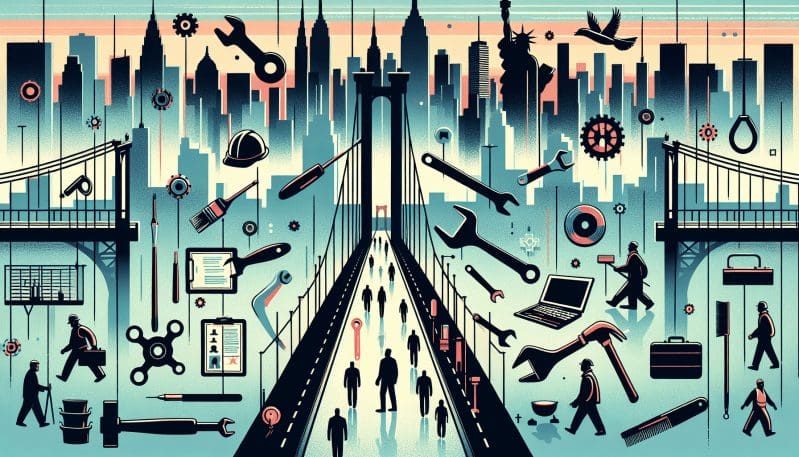In the heart of America’s bustling economic engine, New York, a silent but pervasive challenge impedes the city’s progress: the skills gap. This gap represents the disconnect between the abilities employers demand and the skills the workforce possesses. Amidst this backdrop, vocational training has emerged as a beacon of hope, offering a viable solution to bridge this widening chasm and rejuvenate the workforce of the Empire State.
The skills gap currently seen in New York is not unique, but its effects are acutely felt in a state that prides itself on being at the forefront of industry and innovation. Employers across various sectors are struggling to find workers who have the right mix of technical know-how and practical experience. This is particularly true in the realms of manufacturing, healthcare, IT, and green energy – sectors poised for growth if they can only find the workforce to drive it.
Trade schools and vocational training programs stand as the cornerstone for mitigating this gap. By aligning curricula with industry needs, these educational institutions ensure that students gain not only theoretical knowledge but also the hands-on skills that are immediately transferable to the workplace. The benefits of such an education are manifold; vocational training can be shorter and more cost-effective than traditional four-year degrees, providing students with a quicker route to employment without the burden of excessive student debt.
Moreover, industry partnerships play a crucial role in this educational model. By working closely with local businesses, vocational schools can provide students with apprenticeship and internship opportunities that lead to real-world experience and often, job offers post-graduation. Such synergies ensure that education translates into employment, benefiting both the learners and the economy at large.
The impact on employment rates and economic growth stemming from a focus on vocational education cannot be overstated. As more individuals gain the skills needed for in-demand jobs, employment rates rise, and these well-paying positions enable workers to contribute more significantly to the local economy. A workforce equipped with the right skills attracts companies to the region and encourages the establishment of new businesses, fueling further economic expansion.
Success stories abound, with testimonials from graduates who have transformed their lives through vocational training. They serve not only as an inspiration but as tangible proof of the system’s efficacy. Despite these successes, there are challenges to be faced, such as overcoming the societal stigma often associated with ‘blue-collar’ careers and ensuring access to vocational training across diverse communities.
As The Work Times, we recognize the sea-change that skill-based education heralds for the modern economy. The opportunities that arise when we shift our focus towards equipping individuals with tangible, in-demand skills can lead to a more robust and resilient workforce, ready to meet the challenges of today and tomorrow.
As advocates for vocational training, we echo the call for a more agile and responsive education system, one that values the trades and the profound impact they have on individual livelihoods and our communal prosperity. Together, let’s bridge the skills gap and rekindle the spirit of opportunity that New York embodies. It’s time to invest in the workforce of the future, today.




























